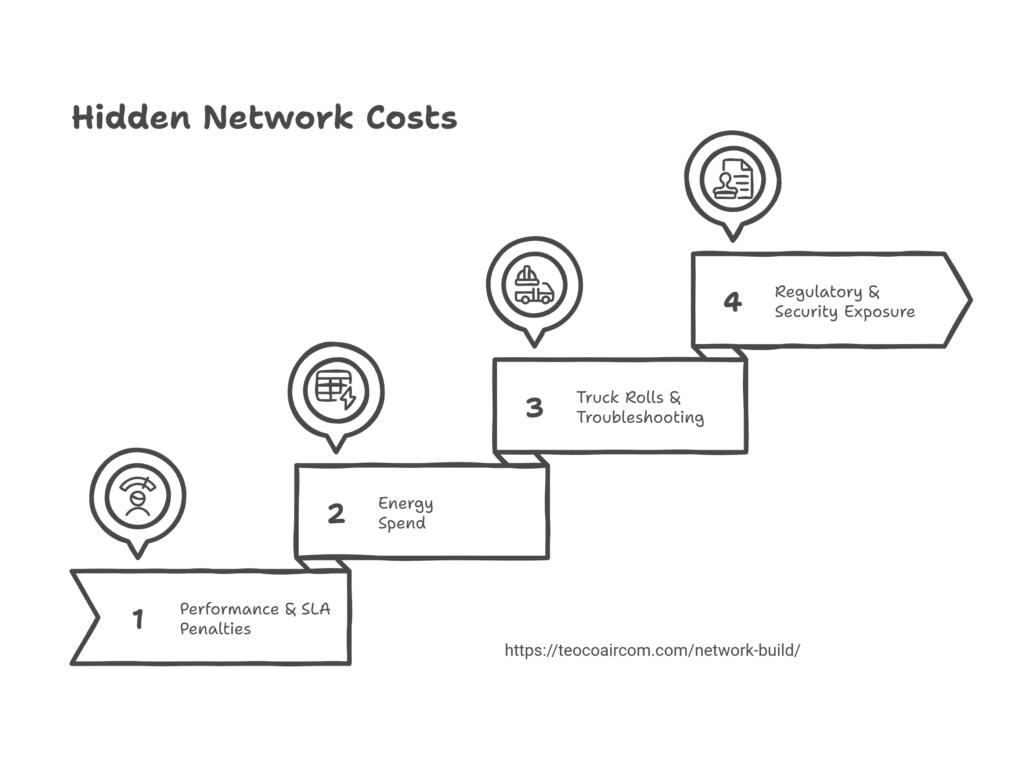Configuration Drift: The Hidden Tax on 5G Networks—and How to Stop Paying It

Configuration drift occurs when the live parameters in a network gradually diverge from the “planned” or “golden” configuration.
In highly dynamic mobile environments, every software upgrade, spectrum refarm, or new slice can introduce thousands of changes. If those changes aren’t tracked in real time, the intended state quietly slips out of sync with reality, creating an invisible layer of technical debt.

Why 5G Networks Are Especially Vulnerable
Several key forces are accelerating configuration drift in today’s mobile networks:
Parameter explosion
Operators must track thousands of parameters across multi-vendor estates and multiple generations (2G → 5G).
Faster release cycles
Cloud-native cores and Open RAN components ship updates weekly, leaving manual audits in the dust.
Denser topologies
Small-cell rollouts and massive-MIMO sectors multiply the number of sites and objects that can drift.
Rising OpEx pressure
Analysts estimate 5G operating costs run 30-50% higher than 4G, with configuration complexity a major driver.
Agility is great for innovation, but it also amplifies the risk and cost—of drift.
The Hidden Costs Operators Rarely Quantify
As you’ll discover, hidden costs are embedded across nearly every aspect of a mobile network—whether in engineering, regulatory compliance, or support operations.
Performance & SLA penalties
Misaligned hand-over thresholds or power limits silently degrade KPIs until alarms fire—and penalties follow.
Energy spend
Incorrect sleep-mode parameters keep radios powered when traffic is low, compounding already-higher 5G energy bills.
Truck rolls & troubleshooting time
Engineers chase symptoms (call drops, throughput dips) instead of root-cause drift, extending MTTR.
Regulatory & security exposure
Auditors increasingly demand proof that critical parameters match “golden” baselines; drift leaves gaps that translate into fines.
These costs add up slowly, so they’re easy to miss—until quarterly OpEx overruns or churn spikes reveal the “tax” drift has been charging all along.
Why Legacy Audits Fall Short
Traditional configuration management relies on:
- Periodic snapshots (weekly or monthly)
- Custom scripts to compare snapshots with spreadsheets of “golden” values
- Manual ticketing to push corrections into vendor-specific element managers.
This approach is reactive and labor-intensive. By the time an engineer spots a discrepancy, the network software may have moved on—or new drift may already be in play.
A Modern Blueprint: Continuous Baseline
The alternative is to treat the planned network as a living digital twin that is continuously reconciled with reality. Aircom’s SmartCM embodies this model:
- Planned-network baseline – Engineers curate the ideal parameter set inside SmartCM. RAN governance supports operators set business rules that can often run into hundreds.
- Real-time comparison – The platform automatically checks every live RAN element against that baseline, flagging discrepancies on a daily basis.
- Groups & templates – “Golden” rules are defined once and inherited across logical site clusters, eliminating repetitive script work.
Drift is now identified within hours—not weeks—shrinking the window in which it can hurt subscribers
From Detection to Zero-Touch Remediation
Detection alone reduces troubleshooting time, but the real savings arrive when the loop is closed automatically with SmartCM. The platform:
- Monitors hundreds of millions of cell parameters
- Triggers corrective workflows
- Adjusts key settings without human intervention
The result: no degradation in the network, lower MTTR, and a more scalable operations model—proof that automation can turn drift management from cost center into strategic advantage.
Takeaways
• Configuration drift is inevitable in agile, software-defined 5G networks—but its cost isn’t.
• Periodic audits are too slow; continuous plan-vs-live reconciliation is the new normal.
• Aircom’s SmartCM couples discrepancy detection with zero-touch workflows, already proven at scale by leading operators in Europe and Asia Pacific.
Ready to make drift a thing of the past? Download the SmartCM solution brief or request a live demo to see continuous compliance in action.
How can we help?
For over 25 years, Aircom has helped network operators run state-of-the-art mobile networks and profitable businesses. Learn how we can help you in the areas critical to the success of modern CSPs.







